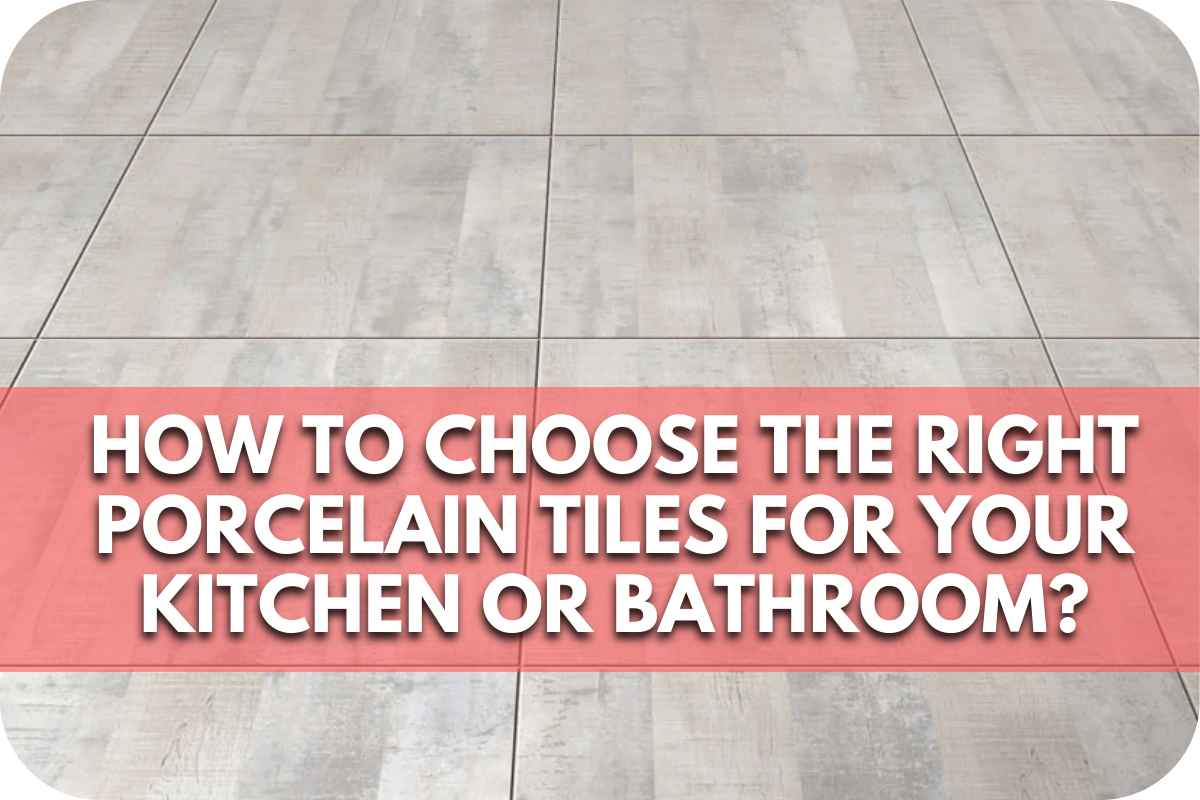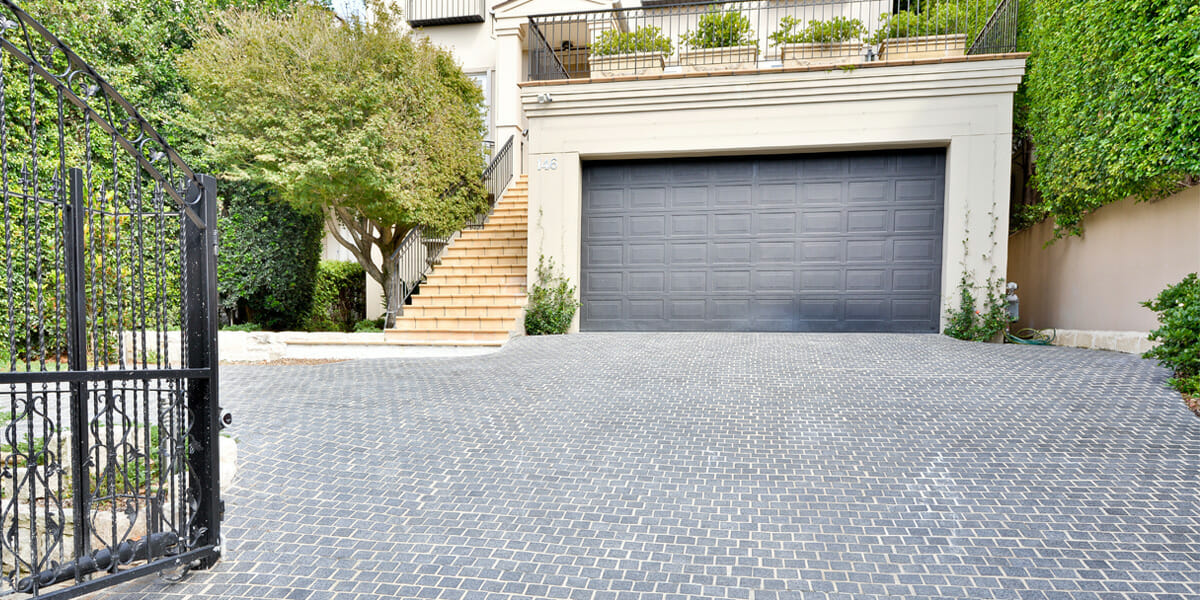
Struggling to choose the perfect porcelain tiles for your kitchen or bathroom? With countless styles, colours, and finishes available, the decision can feel overwhelming, leaving you unsure where to start.
Our comprehensive guide simplifies the selection process, offering expert tips and practical advice to help you choose the ideal porcelain tiles for your kitchen or bathroom. Read on to find the perfect match for your home.
1. Assessing Your Space
Before selecting the ideal porcelain tiles, it’s crucial to assess your kitchen or bathroom space thoroughly. Consider the size and layout of the room—large tiles can create a sense of openness in a smaller room, while smaller tiles might add texture and interest to larger areas.
Evaluate the lighting conditions: natural light enhances lighter tiles, making the space feel more airy, whereas darker tiles can add depth and warmth. Also, consider the room’s function and foot traffic—high-traffic areas may require more durable, slip-resistant tiles.
Don’t forget the existing décor; your tiles should complement the overall style, whether modern, traditional, or rustic. Careful assessment ensures that your porcelain tiles look beautiful and serve their purpose effectively, enhancing your space’s aesthetics and functionality.
2. Tile Types and Finishes
Choosing the right porcelain tile goes beyond just selecting a colour or pattern; understanding the different types and finishes is key to achieving the desired look and functionality in your kitchen or bathroom.
Porcelain tiles come in various types, such as glazed, unglazed, polished, and matte. Glazed tiles offer a protective layer that makes them resistant to stains and moisture, which is ideal for high-traffic and wet areas. On the other hand, Unglazed tiles provide a more natural, textured finish, offering slip resistance but requiring more maintenance.
Polished porcelain tiles create a sleek, reflective surface that adds a touch of luxury, perfect for modern interiors. Matte finishes, while understated, provide a subtle, sophisticated look and are great for creating a warm, inviting space.
When selecting your tiles, consider the finish that best aligns with your design vision and the room’s practical demands. The right tile type and finish can elevate your space, balancing style with durability.
3. Colour Considerations
Selecting the right colour for your porcelain tiles is pivotal in defining the atmosphere of your kitchen or bathroom. Light-coloured tiles, such as whites, creams, and soft greys, can make a space feel larger and more open, reflecting natural light to create an airy, fresh environment.
These tones are perfect for smaller spaces or areas with limited natural light. Darker tiles, like charcoal, navy, or deep brown, add depth and sophistication, ideal for creating a cosy, intimate ambience.
Additionally, consider the existing colour palette of your cabinetry, countertops, and fixtures—your tiles should harmonise or contrast these elements. Remember, bolder colours and patterns can be striking, but they may also dominate the room’s design, so use them thoughtfully.
Ultimately, your chosen colour will set the tone for your entire space, influencing its aesthetic appeal and overall vibe.
4. Tile Sizes and Shapes
Choosing the right tile size and shape is crucial to achieving the desired visual effect in your kitchen or bathroom. Larger tiles, such as 60×60 cm or 30×60 cm, can create a seamless, expansive look, making smaller spaces appear larger by reducing the number of grout lines.
These are particularly effective in contemporary designs where a sleek, uncluttered appearance is desired. Smaller tiles, like 10×10 cm or 20×20 cm, offer more flexibility in design, allowing for intricate patterns such as herringbone, chevron, or mosaic, which can add character and detail to your space.
Shapes also play a pivotal role in the overall design. While square and rectangular tiles are classic choices, hexagonal, penny round, or even elongated subway tiles can bring a unique, modern twist to your room.
Consider how different sizes and shapes will interact with the room’s proportions and your chosen layout. The right combination of tile size and shape can enhance the spatial dynamics of your kitchen or bathroom, creating a balanced and visually appealing environment.
5. Durability and Maintenance
When choosing porcelain tiles for your kitchen or bathroom, durability and ease of maintenance should be top priorities. Porcelain tiles are renowned for their exceptional strength and resistance to wear, making them ideal for high-traffic areas. They are highly resistant to scratches, stains, and moisture, ensuring they maintain their appearance over time, even in the most demanding environments.
Porcelain tiles are relatively low-maintenance. Regular sweeping or vacuuming and occasional mopping using a mild detergent are typically all needed to keep them pristine.
Unlike natural stone, porcelain does not require sealing, saving time and effort in long-term upkeep. Additionally, their non-porous nature makes them resistant to mould and mildew, which is particularly important in wet areas like bathrooms.
Investing in high-quality porcelain tiles enhances your space’s aesthetic appeal. It ensures that your flooring or wall coverings stand the test of time, offering beauty and functionality with minimal maintenance.
6. Installation Considerations
Proper installation is critical to achieving a professional and long-lasting result with porcelain tiles in your kitchen or bathroom. Before installation, ensure the subfloor or wall surface is clean, level, and dry, as uneven surfaces can cause tiles to crack or shift over time.
Choosing the right adhesive is also essential. For porcelain tiles, a high-quality, flexible adhesive is recommended to accommodate the tile’s low porosity and prevent issues like detachment.
The layout plan is another vital consideration. Dry-lay the tiles to determine the best arrangement, considering grout lines and any necessary cuts. This step helps minimise wastage and ensures a balanced design, particularly around edges and corners.
Proper spacing between tiles is also crucial; using tile spacers can help maintain consistent gaps for grout, improving the appearance and enhancing the installation’s durability by preventing moisture seepage.
Lastly, consider hiring a professional installer if you’re not confident in your DIY skills. A well-executed installation ensures that your porcelain tiles look stunning and have a durable, lasting finish.
7. Budgeting and Cost
When selecting porcelain tiles for your kitchen or bathroom, budgeting is crucial to balance quality with affordability. Porcelain tiles come in a wide range of prices, influenced by size, finish, design complexity, and brand. It’s important to start with a clear budget, allowing for both the cost of the tiles and additional expenses like adhesive, grout, and professional installation if needed.
While it might be tempting to opt for cheaper options, investing in higher-quality tiles can save you money in the long run by offering better durability, easier maintenance, and a more polished finish.
Remember that larger tiles cost more per square metre but may reduce installation time and labour costs due to fewer grout lines. Additionally, custom or designer tiles will increase your budget, but they can add a unique touch to your space.
It’s also wise to purchase 10-15% of tiles to cover breakage, future repairs, or design changes. You can achieve a stunning result without overspending by carefully planning your budget and considering both initial costs and long-term value.
Conclusion
Choosing the right porcelain tiles for your kitchen or bathroom involves careful consideration of space, design, durability, and budget. Enhance your home with beautiful, long-lasting tiles.
Visit Splendour In Stone Melbourne for expert advice and a wide selection of premium porcelain tiles. Contact us today to start your renovation journey.
More To Explore

Grey Granite Cobblestones for Driveways: Strength and Style
Grey granite cobblestones combine strength, safety, and timeless appeal, making them a popular choice for Melbourne driveways and outdoor spaces. Their natural flamed texture offers

Granite Wall Cladding Melbourne: Modern and Classic Appeal
Granite wall cladding brings both modern sophistication and classic charm to Melbourne architecture. Known for its durability and natural beauty, granite transforms façades, feature walls,


